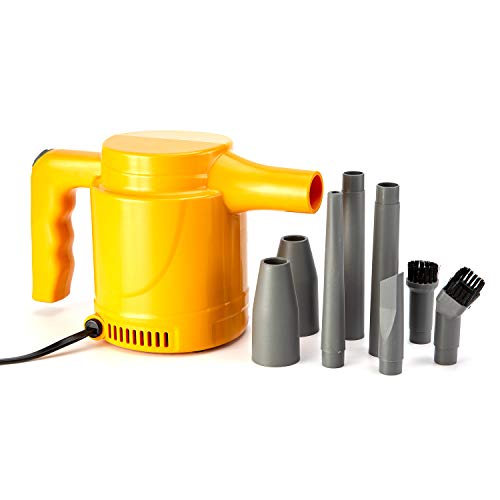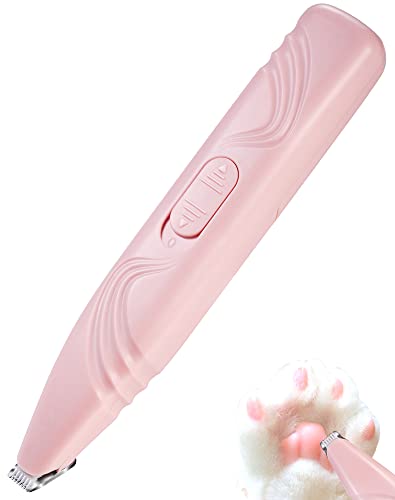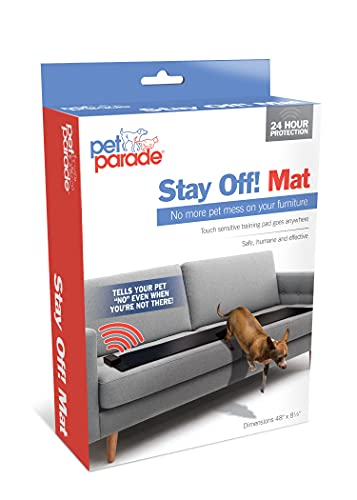Guides & FAQs
Where Can You Donate Pet Hair
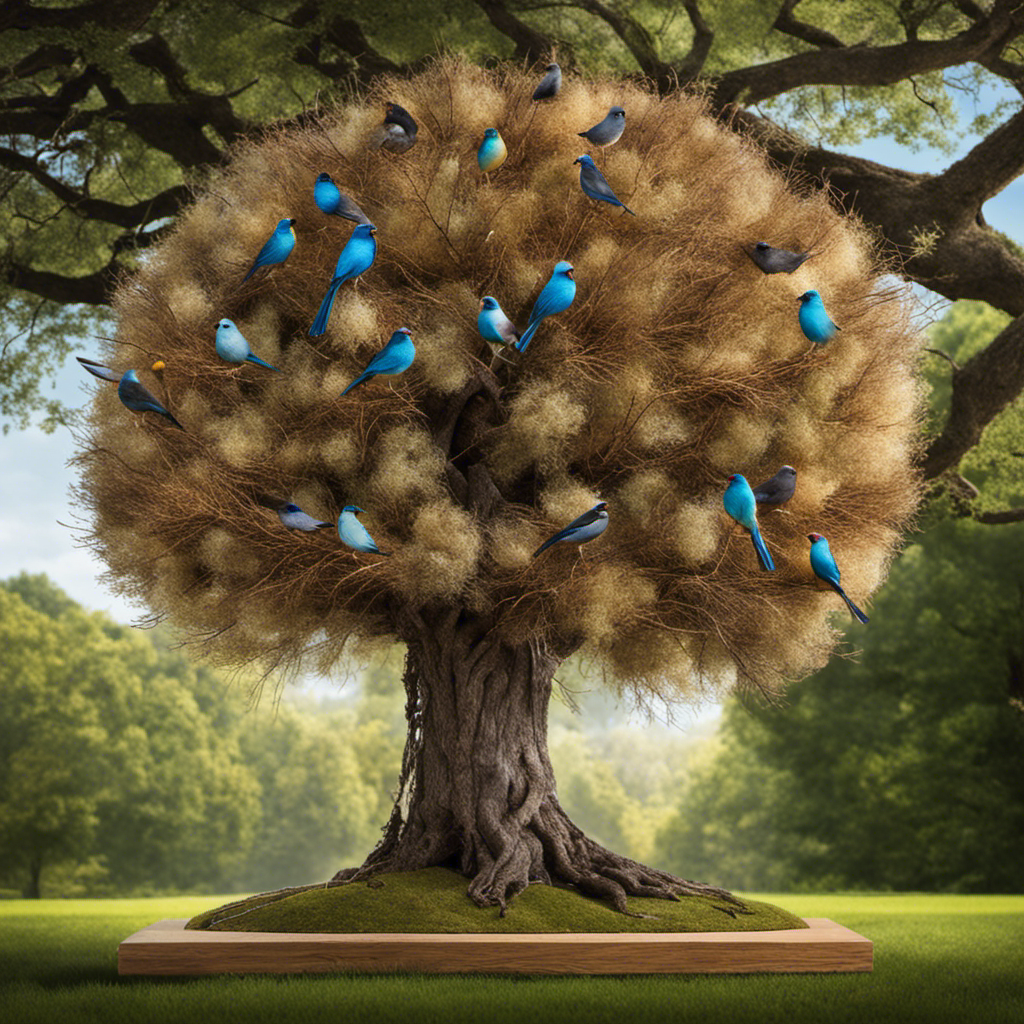
Were you aware that a single dog can generate as much as two pounds of fur annually? That’s quite a bit of hair! However, rather than discarding it, have you thought about donating it?
There are actually many organizations and projects that would love to put your pet’s hair to good use. From animal shelters and wildlife rehabilitation centers to organic gardening projects and bird nest building organizations, there are plenty of places where you can donate pet hair and make a positive impact.
Let’s dive in and explore the possibilities!
Key Takeaways
- Animal shelters and pet therapy programs accept pet hair donations for creating mats and nesting material.
- Wildlife rehabilitation centers collaborate with pet therapy programs for veterans.
- Pet-friendly nursing homes understand the positive effects of animals on residents’ lives and offer pet therapy programs.
- Bird nest building organizations collaborate with bird watching groups and conduct research and monitoring programs for valuable bird data.
Local Animal Shelters
I can donate my pet hair to local animal shelters. Many animal shelters accept donations of pet hair because it can be used to create mats and nesting material for the animals in their care. This provides them with comfort and warmth, especially during colder months. Did you know that pet hair can be used for various purposes, including pet therapy programs and even pet grooming competitions? Additionally, some shelters use pet hair for pet therapy programs, where animals are brought to hospitals or nursing homes to provide comfort and companionship to patients. It’s amazing how something as simple as pet hair can make a difference in the lives of both animals and humans.
Speaking of making a difference, let’s explore another place where pet hair donations can be beneficial – wildlife rehabilitation centers.
Wildlife Rehabilitation Centers
Visiting wildlife rehabilitation centers allows me to contribute to the care of injured animals. These centers play a crucial role in wildlife conservation efforts by providing medical treatment, rehabilitation, and release programs for injured or orphaned animals. It’s truly a rewarding experience to witness the dedication and passion of the staff as they work tirelessly to restore these animals back to health and freedom.
- Wildlife rehabilitation centers provide a safe and nurturing environment for injured animals to heal and recover.
- They offer specialized care and treatment tailored to the specific needs of each animal.
These centers also play a vital role in educating the public about wildlife conservation and the importance of protecting natural habitats.
- Wildlife rehabilitation centers often collaborate with pet therapy programs for veterans, offering a unique and therapeutic experience for both the animals and the veterans.
- By supporting these centers, we contribute to the preservation of our wildlife and create a positive impact on the lives of both animals and humans.
Pet-Friendly Nursing Homes
Exploring pet-friendly nursing homes allows me to see firsthand the positive effects that animals have on the residents’ well-being and overall quality of life. These senior living communities understand the importance of companionship and have embraced pet therapy programs to enhance the lives of their residents.
Pets, whether they’re dogs, cats, or even birds, provide comfort, emotional support, and a sense of purpose to the elderly. Interacting with animals can reduce stress, decrease feelings of loneliness, and improve mental and physical health.
The presence of pets in these nursing homes not only brings joy to the residents but also creates a sense of community among them. It’s heartwarming to witness the smiles on their faces as they interact with their furry friends.
Pet-friendly nursing homes truly understand the power of animals in fostering a positive and enriching environment for their residents.
Bird Nest Building Organizations
Being part of a bird nest building organization has allowed me to witness the incredible dedication and passion of volunteers who work together to create safe and nurturing homes for our feathered friends. It’s truly inspiring to see people come together, armed with their knowledge and skills, to make a difference in the lives of birds.
These organizations not only provide shelter for birds but also contribute to the preservation of their habitats and the overall biodiversity of our planet. Here are some key aspects of bird nest building organizations that make them remarkable:
-
Collaboration with bird watching groups, promoting awareness and appreciation of birds in their natural habitats.
-
Utilizing eco-friendly crafts and materials, ensuring that nests are safe and sustainable for birds and the environment.
-
Conducting research and monitoring programs to gather valuable data on bird populations and behavior.
-
Educating the community about the importance of bird conservation and the role of nest building organizations.
-
Creating opportunities for individuals to get involved and make a positive impact on bird populations.
Through the efforts of these dedicated volunteers, bird nest building organizations are making a significant contribution to the welfare of birds and the conservation of our natural world.
Organic Gardening Projects
Working on organic gardening projects has allowed me to cultivate my own food and contribute to a more sustainable and environmentally-friendly way of living. One of the key aspects of organic gardening is the use of composting techniques. Composting is the process of breaking down organic materials, such as food scraps and yard waste, into nutrient-rich soil that can be used to nourish plants.
By composting, I’m able to reduce waste, improve soil quality, and minimize the need for chemical fertilizers. Another important aspect of organic gardening is natural pest control. Instead of relying on harmful pesticides, I use natural methods to deter pests. This includes companion planting, which involves planting certain crops together to repel pests, as well as using natural repellents like garlic spray or diatomaceous earth.
Organic gardening not only allows me to grow healthy, delicious food, but it also promotes a healthier planet for future generations.
Frequently Asked Questions
Can I Donate Pet Hair That Has Been Treated With Flea and Tick Prevention Products?
Yes, you can donate pet hair that has been treated with flea and tick prevention products. However, it is important to follow guidelines for collecting pet hair to ensure its safety and effectiveness for donation.
Are There Any Specific Guidelines I Should Follow When Collecting and Donating Pet Hair?
When it comes to collecting and donating pet hair, there are some guidelines to follow. I’m here to share eco-friendly ways to repurpose pet hair and ensure it gets put to good use.
Can I Donate Pet Hair From Any Type of Animal, or Are There Specific Animals That Organizations Accept?
Different organizations accept pet hair from various types of animals. Donating pet hair can be used for different purposes, such as making blankets or cleaning up oil spills. It’s an opportunity to make a positive impact.
How Does Donating Pet Hair to Bird Nest Building Organizations Benefit the Birds?
Donating pet hair to bird nest building organizations benefits bird populations by providing them with essential nesting material. It’s crucial for birds to have suitable materials to build their nests, ensuring their breeding success and the survival of their offspring.
Are There Any Other Unique Organizations or Projects That Accept Pet Hair Donations Aside From Those Mentioned in the Article?
There are several unique pet hair donation projects that accept pet hair for alternative uses. These projects provide opportunities to repurpose pet hair for things like crafting, insulation, and even making yarn.
Conclusion
After researching various options, I’ve found that there are several places where you can donate pet hair.
Local animal shelters often use pet hair to create bedding for animals in need.
Wildlife rehabilitation centers also accept pet hair to help provide warmth and comfort to orphaned or injured animals.
Pet-friendly nursing homes use donated pet hair to create sensory stimulation items for their residents.
Bird nest building organizations and organic gardening projects also utilize pet hair for various purposes.
By donating pet hair, you can make a meaningful contribution to these organizations and help create a better world for animals and humans alike.
Carter is a valued member of our team at Pet Hair Vacuum Critic, where his passion for pets and exceptional writing skills come together to create informative and engaging content for our readers.
Carter’s journey into the world of pet care and pet hair management began with his own furry companions. As a pet owner, he understands the daily challenges of keeping a clean and tidy home while providing a loving environment for his pets. This personal experience drives his dedication to helping fellow pet owners navigate the world of pet hair removal and management.
Guides & FAQs
How to Clean Dust and Pet Hair From PC
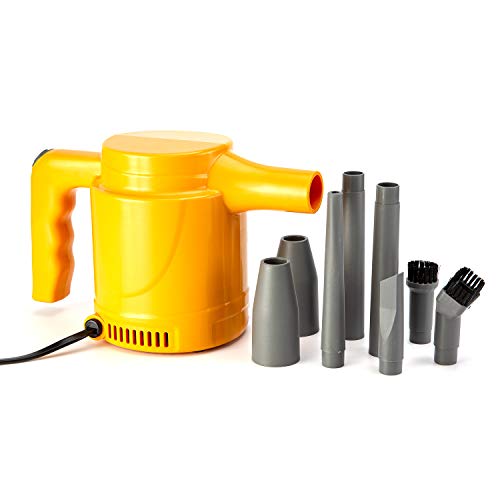
I understand your hesitation towards cleaning dust and pet hair from your PC, as it may seem like a bothersome task. However, it is crucial for the health and performance of your computer.
Not only can these particles clog up your computer’s fans and vents, but they can also cause overheating and performance issues.
In this guide, I’ll show you the step-by-step process to effectively remove dust and pet hair from your PC, ensuring it runs smoothly and stays pet-hair free.
Let’s get started!
Key Takeaways
- Regular cleaning of dust and pet hair from your PC is important to prevent clogging of computer fans and vents.
- Accumulated particles can lead to overheating and performance issues, so regular cleaning extends the lifespan of your PC.
- Using the right tools such as compressed air and a soft microfiber cloth ensures a clean and damage-free PC.
- Precautions such as turning off and unplugging the computer, using compressed air carefully, and avoiding liquid cleaners are necessary to prevent damage while cleaning.
Why Is It Important to Clean Dust and Pet Hair From Your PC
I’ve learned that it’s important to clean dust and pet hair from my PC because it can cause overheating and damage to the internal components. Regular PC maintenance brings many benefits, such as an extended lifespan and improved performance. Dust and pet hair can accumulate in the fans, vents, and heat sinks of the computer, obstructing proper airflow and causing the components to work harder. This increased workload can lead to overheating, which can result in system crashes, reduced performance, or even permanent damage to the CPU or GPU.
Additionally, dust can also clog the cooling system, causing it to become less effective. Therefore, it’s vital to regularly clean your PC to prevent these common issues.
Transitioning into the next section, let’s now discuss the tools and materials needed for cleaning dust and pet hair from your PC.
Tools and Materials Needed for Cleaning Dust and Pet Hair From Your PC
To effectively remove dust and pet hair from my computer, I’ll need a can of compressed air and a soft microfiber cloth. These tools are essential for cleaning the delicate components of my PC without causing any damage.
The can of compressed air is perfect for blowing away dust from hard-to-reach areas such as the keyboard, vents, and fans. The high-pressure air stream dislodges the dust particles, allowing them to be easily removed.
The soft microfiber cloth, on the other hand, is ideal for wiping down the surfaces of my computer and removing any remaining dust or pet hair.
With these tools in hand, I can ensure that my PC stays clean and free from any potential damage caused by dust and pet hair buildup.
Now, let’s move on to the step-by-step guide to cleaning dust and pet hair from your PC.
Step-By-Step Guide to Cleaning Dust and Pet Hair From Your PC
Using a can of compressed air and a soft microfiber cloth, I remove the accumulated debris and ensure the longevity of my computer. Regular PC maintenance is crucial for optimal performance and preventing hardware damage.
Dust and pet hair can clog the fans, causing overheating and reducing airflow, which can lead to system failure. By cleaning the PC regularly, I can maintain proper airflow and prevent overheating.
However, there are common mistakes to avoid during PC cleaning. One mistake is using a vacuum cleaner, as it can generate static electricity and damage sensitive components. Another mistake is spraying liquids directly onto the computer, as it can cause electrical shorts.
It’s important to use the right tools and follow proper cleaning techniques to avoid any potential damage to the PC.
Precautions to Take While Cleaning Dust and Pet Hair From Your PC
While cleaning my computer, it’s important to take precautions to prevent any potential damage. Dust and pet hair can accumulate inside the PC, causing overheating and performance issues.
To ensure safety, always turn off the computer and unplug it from the power source before starting the cleaning process. Use compressed air to blow away the dust and hair from the vents and fans. Be careful not to spray the air too close or too forcefully as it can damage delicate components.
Additionally, use a soft brush or microfiber cloth to gently wipe away any remaining dust. Avoid using liquid cleaners as they can cause damage to the electronic components.
Taking these safety measures will help keep your PC clean and running smoothly.
Tips for Maintaining a Dust and Pet Hair-free PC
Maintaining a dust and pet hair-free computer requires regular cleaning and preventive measures. Here are some tips to help you keep your PC clean and free from these unwanted particles:
-
Use compressed air: Regularly blow out dust and pet hair from your PC using compressed air. This will help remove particles from hard-to-reach areas.
-
Keep your PC elevated: Elevate your PC off the ground to prevent dust and pet hair from settling on the bottom. This can be done using a stand or a simple platform.
-
Clean filters and vents: Regularly clean the filters and vents of your PC to ensure effective air circulation. Clogged filters and vents can restrict airflow, causing dust and pet hair to accumulate.
-
Groom your pets: Regularly groom your pets to minimize shedding. This will help reduce the amount of pet hair that can find its way into your PC.
-
Invest in a dust cover: Consider using a dust cover or case to protect your PC when it’s not in use. This will help prevent dust and pet hair from settling on your computer.
Frequently Asked Questions
How Often Should I Clean Dust and Pet Hair From My Pc?
Not cleaning dust and pet hair from your PC regularly can pose potential risks. Accumulated dust and pet hair can affect performance and lifespan by clogging fans, causing overheating, and reducing airflow.
Can I Use a Vacuum Cleaner to Clean the Dust and Pet Hair From My Pc?
I wouldn’t recommend using a vacuum cleaner to clean your PC. There are better alternatives, like compressed air or an anti-static brush. It’s important to follow best practices for cleaning pet hair to prevent damage to your computer.
Is It Necessary to Shut Down My PC Before Cleaning the Dust and Pet Hair?
It is important to shut down the PC before cleaning dust and pet hair to avoid potential risks. Using a soft brush is crucial for effectively removing debris without damaging internal components.
Can I Use Compressed Air to Clean the Dust and Pet Hair From My Pc’s Components?
Yes, you can use compressed air to clean dust and pet hair from your PC components. However, it’s important to consider alternative cleaning methods and the potential risks and precautions associated with using compressed air.
How Can I Prevent Dust and Pet Hair From Accumulating in My PC in the First Place?
To prevent dust and pet hair buildup in my PC, I employ effective methods for maintaining a clean environment. Regularly dusting and vacuuming the area around my PC, using air filters, and keeping pets away are essential.
Conclusion
In conclusion, maintaining a dust and pet hair-free PC is crucial for its optimal performance and longevity. By regularly cleaning your PC using the appropriate tools and following the step-by-step guide provided, you can ensure its efficiency and prevent any potential damage caused by dust and pet hair accumulation.
Remember to take necessary precautions and implement the tips mentioned to keep your PC clean and free from these unwanted particles. Happy cleaning!
James is an integral member of our Pet Hair Vacuum Critic team, where his love for animals and strong writing skills converge to create informative and engaging content for our readers.
James’s journey into the realm of pet care and pet hair management began with his personal experiences as a pet owner. He understands the daily challenges and joys that come with sharing a home with furry companions, and this personal connection drives his commitment to helping others navigate the world of pet hair removal and management.
Guides & FAQs
How to Trim Pet Hair Around Genitals
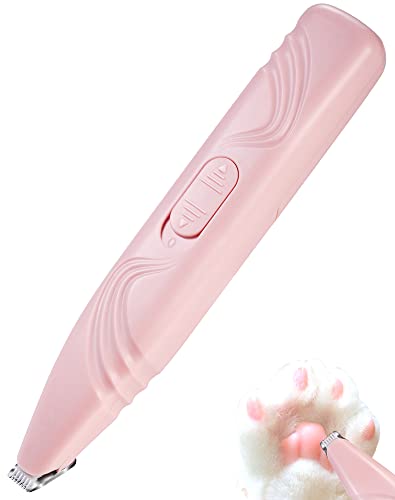
As a pet parent, I recognize the significance of maintaining the grooming and comfort of our furry companions.
Did you know that 80% of pet owners struggle with trimming their pet’s hair around the genitals?
In this article, I will guide you through the step-by-step process of trimming pet hair in that delicate area.
From gathering the necessary tools to preparing your pet for the trim, I’ll provide you with the knowledge and tips you need for a safe and successful grooming session.
Key Takeaways
- Trimming around the genitals is important for the overall hygiene and well-being of pets.
- Use high-quality tools designed for sensitive areas to ensure a safe and successful trim.
- Take your time and work slowly, staying gentle and patient to avoid accidents or injuries.
- Reward your pet with treats and praise to create a positive and calming environment during the trim.
Understanding the Importance of Trimming
I understand why trimming is important for the comfort and hygiene of my pet.
Trimming the hair around their genitals provides several hygiene benefits. Firstly, it prevents the accumulation of urine and feces in the hair, reducing the risk of bacterial and fungal infections. Additionally, it helps to keep the area clean and odor-free, preventing any discomfort or irritation for my pet.
Neglecting to trim the hair around their genitals can lead to potential health risks. Excessive hair can trap dirt and debris, creating a breeding ground for parasites like fleas and ticks. It can also result in matting, which can cause pain and discomfort for my pet.
Regular trimming is essential to ensure the overall well-being and hygiene of my furry friend.
Gathering the Necessary Tools
To get started, I’ll need a pair of grooming scissors and a comb. Choosing the right grooming tools is essential for safely trimming your pet’s hair around their genitals. Here are four important factors to consider when selecting the tools:
-
Safety features: Look for scissors with rounded tips to prevent accidental injuries. Additionally, consider a comb with wide teeth to avoid pulling and tugging on your pet’s delicate skin.
-
Size and comfort: Ensure that the scissors and comb fit comfortably in your hand for better control and precision during the trimming process. This will help minimize any potential harm to your pet.
-
Quality and durability: Invest in high-quality grooming tools that will last longer and provide a smoother trimming experience. Poorly made tools may cause discomfort or uneven cuts.
-
Ease of cleaning: Opt for tools that are easy to clean and maintain. Proper hygiene is crucial to prevent any infections and keep your pet healthy.
Remember to follow safety precautions during trimming, such as taking breaks to avoid fatigue and never rush the process. Your pet’s safety and comfort should always be the top priority.
Preparing Your Pet for the Trim
Ensuring my pet feels calm and relaxed is crucial before beginning the grooming process.
Preparing pets for grooming and dealing with their anxiety during the trim is essential to ensure a smooth and stress-free experience for both of us.
Firstly, I make sure to schedule the grooming session during a time when my pet is usually calm and well-rested.
I create a soothing environment by playing soft music and using aromatherapy to help relax their senses.
Additionally, I give my pet a gentle massage to help alleviate any tension or anxiety they may be feeling.
By taking these steps, I can help my pet feel more at ease and ready for the trim.
With their comfort in mind, I can now move on to the step-by-step guide to trimming their hair around the genitals.
Step-by-Step Guide to Trimming Pet Hair Around Genitals
Creating a calm and relaxed environment for my pet is crucial when trimming in sensitive areas. To ensure a safe and successful trim, it’s important to follow proper grooming techniques and be aware of the potential risks and precautions involved in trimming pet hair around the genitals.
Here are four key steps to guide you through the process:
-
Prepare the area: Before starting, ensure that the area is clean and free of any dirt or debris. This will help prevent any infections or irritations.
-
Use the right tools: Invest in high-quality grooming tools specifically designed for trimming sensitive areas. This will make the process easier and safer for both you and your pet.
-
Take it slow: Trim in small sections, taking breaks as needed. This will help prevent accidental cuts or injuries to your pet’s delicate skin.
-
Stay calm and gentle: Approach the trim with a calm and patient demeanor. Speak soothingly to your pet and reward them with treats and praise throughout the process.
By following these steps, you can ensure a safe and successful trim for your pet’s genital area.
Transitioning into the next section, let’s explore some additional tips and tricks for a safe and successful trim overall.
Tips and Tricks for a Safe and Successful Trim
I’ve found that using a gentle touch and maintaining a steady hand are key when trimming sensitive areas on my pet. When it comes to pet hair trimming, there are a few common mistakes to avoid.
First, never rush the process. Take your time and work slowly to prevent any accidents or injuries.
Second, be careful not to cut too close to the skin, as this can cause irritation or cuts.
Lastly, always use the right tools for the job. Different pet breeds may require different grooming techniques. For example, long-haired breeds may need regular brushing and trimming, while short-haired breeds may only need occasional touch-ups.
It’s important to research and understand the specific needs of your pet’s breed to ensure a safe and successful trim.
Frequently Asked Questions
How Often Should I Trim My Pet’s Genital Hair?
Trimming my pet’s genital hair is important for their hygiene. I should trim it regularly to prevent matting and irritation. It’s essential to use proper tools and techniques to ensure their comfort and safety.
Can I Use Regular Scissors to Trim My Pet’s Genital Hair?
Yes, regular scissors are not recommended for trimming pet genital hair. It’s important to use proper trimming techniques and consider professional grooming services to ensure the safety and comfort of your pet.
Is It Necessary to Trim My Pet’s Genital Hair During the Winter Months?
During the winter months, it is still important to maintain pet hygiene. Trimming genital hair may help prevent matting and discomfort. I once saw my dog struggle with tangled hair, and it made me realize the importance of regular grooming.
Are There Any Specific Products That Can Help Soothe My Pet’s Skin After Trimming Their Genital Hair?
I found some soothing products for post trim care and have tips to prevent skin irritation after trimming genital hair. It’s important to keep your pet comfortable and their skin healthy.
Can I Trim My Pet’s Genital Hair if They Have a Skin Condition or Irritation in That Area?
Sure, I can trim my pet’s genital hair if they have a skin condition or irritation in that area. However, it’s important to use gentle trimming techniques and be aware of common skin conditions that may require extra care.
Conclusion
In conclusion, trimming your pet’s hair around their genitals is an important grooming task that helps maintain their hygiene and prevents discomfort or health issues.
By following the step-by-step guide and using the necessary tools, you can ensure a safe and successful trim.
While some may feel uneasy about this task, remember that it’s a responsible and caring action that contributes to your pet’s overall well-being.
Take the time to learn and practice proper grooming techniques to keep your furry friend happy and healthy.
James is an integral member of our Pet Hair Vacuum Critic team, where his love for animals and strong writing skills converge to create informative and engaging content for our readers.
James’s journey into the realm of pet care and pet hair management began with his personal experiences as a pet owner. He understands the daily challenges and joys that come with sharing a home with furry companions, and this personal connection drives his commitment to helping others navigate the world of pet hair removal and management.
Guides & FAQs
What Is the Best Way to Get Pet Hair Out of the Air

Did you realize that on average, adults in the United States inhale about 2,800 gallons of air per day? That’s a significant amount that could include pet hair particles! If you’re fed up with constantly sneezing and wheezing, it’s time to act and manage the situation.
In this article, we’ll explore the best ways to banish pet hair from the air. From vacuuming techniques to air purification systems, we’ve got the expert advice you need to breathe easy again.
Key Takeaways
- Air purifiers with effective filters can help remove pet dander and hair from the air
- Regular cleaning and dusting can help reduce allergens in the air
- Using natural remedies or medication can provide allergy relief from pet hair in the air
- Grooming pets regularly and using protective measures can prevent pet hair from accumulating in the air
Vacuuming Techniques
To effectively remove pet hair from the air, you should try using a vacuum with a high-powered suction and a brush attachment. Vacuuming is one of the most effective pet hair removal techniques.
When vacuuming, make sure to start with the areas where your pets spend the most time, such as their favorite lounging spots or sleeping areas. Use the brush attachment to agitate the pet hair and loosen it from the surfaces.
Move the vacuum in slow, deliberate strokes to ensure that the suction picks up all the hair. Don’t forget to vacuum the furniture, curtains, and other fabric surfaces as well.
Regular vacuuming, at least once or twice a week, will help keep the pet hair under control and improve the air quality in your home.
Air Purification Systems
You can use air purification systems to effectively remove pet hair from the air. Air purifiers are designed to filter out various contaminants, including pet dander and hair, ensuring cleaner and fresher air in your home.
These systems work by drawing in air through a series of filters, which capture and trap particles, such as pet hair, before circulating the purified air back into the room. The filters used in air purifiers are specifically designed to capture even the smallest pet dander particles, which can trigger allergies and respiratory issues in sensitive individuals.
Regularly cleaning and replacing the filters in your air purifier is crucial to maintain its effectiveness. By investing in a high-quality air purification system, you can reduce the amount of pet hair in the air and create a healthier living environment for both you and your pets.
Cleaning Tools and Accessories
Using a vacuum with a rotating brush attachment can effectively remove pet hair from various surfaces in your home. These attachments are specifically designed to agitate and loosen stubborn pet hair, making it easier for the vacuum to suction it away.
Additionally, there are other pet hair removal products available on the market, such as lint rollers and pet hair remover gloves, which can be used on upholstery and clothing to quickly and easily pick up pet hair.
Another useful tool for pet hair removal is an electrostatic duster. These dusters have a static charge that attracts and holds onto pet hair, allowing you to easily remove it from furniture and other surfaces.
By utilizing these cleaning tools and accessories, you can keep your home free from pet hair and reduce the amount of allergens in the air.
Now, let’s explore some effective allergy relief strategies.
Allergy Relief Strategies
One effective strategy for relieving allergies is regularly cleaning and dusting your home to remove allergens. Dust, pet dander, and pollen can accumulate on surfaces and in the air, triggering allergic reactions.
To combat this, consider using natural remedies such as eucalyptus oil or baking soda to help neutralize allergens. These can be sprinkled on carpets, upholstery, and bedding before vacuuming or washing.
Additionally, using a HEPA filter in your vacuum cleaner can help capture even the smallest allergen particles.
If your allergies persist despite these efforts, medication options such as antihistamines or nasal sprays may provide relief. It’s important to consult with a healthcare professional to determine the best option for you.
By incorporating these strategies, you can minimize allergens in your home and alleviate allergy symptoms.
This sets the stage for preventing pet hair accumulation.
Preventing Pet Hair Accumulation
To minimize the accumulation of pet hair in your home, regularly grooming your furry friend is essential. Not only does it help to reduce shedding, but it also keeps your pet’s coat healthy and shiny.
Here are some tips to help you keep pet hair under control:
- Brush your pet’s fur daily to remove loose hair and prevent it from ending up on your furniture and floors.
- Consider using a deshedding tool or a grooming glove to remove excess hair more effectively.
- Give your pet regular baths using pet-friendly shampoo to keep their coat clean and minimize shedding.
In addition to regular grooming, using furniture covers can also help protect your sofas and chairs from pet hair. These covers are designed to be durable and easy to clean, making it easier to maintain a pet-friendly home.
Frequently Asked Questions
How Often Should I Vacuum to Effectively Remove Pet Hair From the Air?
To effectively remove pet hair from the air and improve indoor air quality, you should vacuum regularly. The frequency depends on the amount of pet hair and your specific situation, but aim for at least once or twice a week.
Can Air Purifiers Eliminate Pet Odors as Well as Pet Hair?
Air purifiers can effectively eliminate both pet odors and pet hair from the air. They provide a convenient and efficient solution for maintaining clean indoor air. However, there are alternative methods available as well.
Are There Any Cleaning Tools Specifically Designed for Removing Pet Hair From Upholstery?
To remove pet hair from upholstery, there are cleaning techniques you can try. Vacuuming with a brush attachment or using a lint roller can be effective. If you need professional services, consider hiring a pet hair removal specialist.
What Are Some Natural Remedies for Allergy Relief for Pet Owners?
If you’re looking for natural remedies to relieve allergies caused by pets, there are a few options. Essential oils like lavender and eucalyptus can help, as well as regularly cleaning your home and using air purifiers.
Besides Regular Grooming, What Are Some Additional Tips for Preventing Pet Hair From Accumulating in the Home?
To prevent shedding and reduce allergens, there are additional tips besides regular grooming. These include brushing your pet regularly, using a de-shedding tool, keeping your home clean, and using air purifiers.
Conclusion
So there you’ve it, folks! Tired of pet hair floating around your house like a furry tornado? Fear not!
By utilizing advanced vacuuming techniques, investing in top-notch air purification systems, and arming yourself with the right cleaning tools and accessories, you can banish pet hair from the air like a superhero.
Combine these strategies with allergy relief tactics and a proactive approach to prevent pet hair accumulation, and you’ll be breathing easy in no time.
Good luck on your quest for a hair-free abode!
James is an integral member of our Pet Hair Vacuum Critic team, where his love for animals and strong writing skills converge to create informative and engaging content for our readers.
James’s journey into the realm of pet care and pet hair management began with his personal experiences as a pet owner. He understands the daily challenges and joys that come with sharing a home with furry companions, and this personal connection drives his commitment to helping others navigate the world of pet hair removal and management.
-

 Guides & FAQs1 month ago
Guides & FAQs1 month agoLocal Customer Raves About Prompt Delivery
-

 Vacuums for Pet Hair Removal1 week ago
Vacuums for Pet Hair Removal1 week agoWhat Is Different About a Pet Hair Vacuum
-

 Guides & FAQs1 month ago
Guides & FAQs1 month agoLocal Resident Raves About Amazing Service
-

 Guides & FAQs1 month ago
Guides & FAQs1 month agoLocal Customer Raves About Graco’s Excellent Service
-

 Guides & FAQs1 month ago
Guides & FAQs1 month agoThrilled Customer Raves About Graco’s Outstanding Products
-

 Guides & FAQs1 month ago
Guides & FAQs1 month agoSydney Customer Raves About Amazing Paint Experience
-

 Guides & FAQs1 month ago
Guides & FAQs1 month agoPet Hair Under Contact Lense, What to Do
-

 Vacuums for Pet Hair Removal1 week ago
Vacuums for Pet Hair Removal1 week agoWhat Is Best Vacuum for Pet Hair




